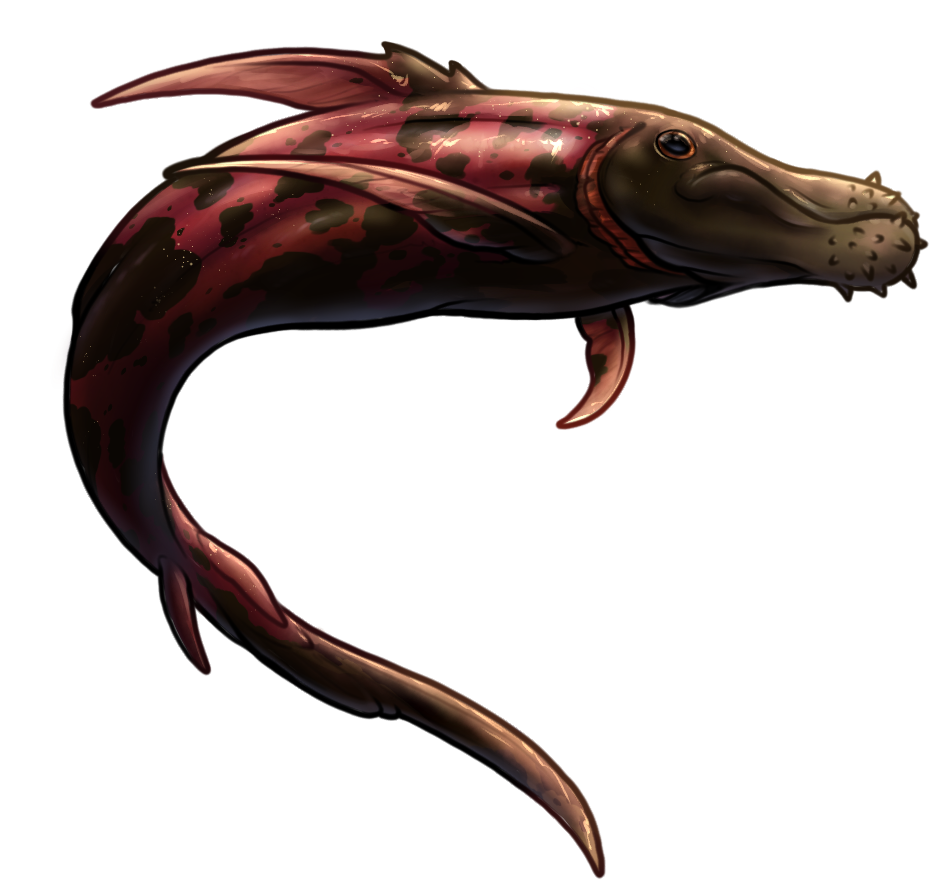
Hardhead
Don't be such a hardhead!
The Hardhead is a medium to large river fish known for its aggression, territoriality, and bone-plated snout. It’s built for speed and collision - a long-bodied predator that uses raw force to dominate both prey and rivals. Found in fast-moving rivers and deep channels, the hardhead is one of the few fish that can be heard before it’s seen, sometimes making audible thuds as it rams into logs, prey, or even the hulls of small boats.
Its body is lean and hydrodynamic, with stiff, angular fins and a powerful tail built for explosive bursts. Its coloration ranges through hues of red - from dusky wine to muddy crimson mottled with irregular dark patches. The head is its namesake: a heavy, bony snout shaped like a spiked club. The snout is reinforced with rigid plating and spikey protrusions that give it both offense and defense.
The Hardhead uses this anatomical weapon to strike prey and drive off competitors. It stuns fish with direct hits, then loops back to feed. Mating and territorial disputes are settled the same way- full-speed collisions that leave gouges in bark, rock, or the loser’s scales. Despite this violence, its body is otherwise lightly armored, relying on speed and situational awareness to avoid predators.
Hardheads are solitary and extremely territorial. Once a stretch of riverbank or a favored ambush spot is claimed, they patrol it relentlessly and react violently to intrusions. They are primarily active at dawn and dusk, especially in shaded bends or current breaks.

Though aggressive, hardheads play a critical role in river ecosystems. They thin out overpopulated species, reduce disease spread through targeted predation, and their head-ramming behaviors stir up substrate and create hiding spots for smaller organisms. Their presence usually indicates a healthy, oxygen-rich water system.
“Hardhead” is both the fish’s name and a regional insult (or compliment). To call someone a hardhead might mean they’re too stubborn to listen, or too tough to move. Their skull plates are often collected and carved into belt buckles, medallions, or combs. In some riverside settlements, young faunids test their bravery by tapping submerged rocks where hardheads are known to nest and trying to escape before the fish charges.
Concept by Goryteeth, Rendering by Necrologia, Info by Deertush.

